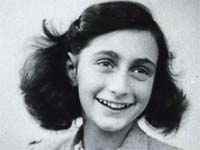
Home Page Project ListingsProject OverviewBackground / ContextLearning ResourcesUseful Links |
Holocaust Day
SchoolRawlett Community Sports College Details of those involved pupils, veterans and other agencies200 students from Year 9 took part in an all day event at school. An exhibition on the Holocaust from Beth Shalom (Holocaust Centre – Nottingham) was displayed. Rudi Oppenheimer, a Bergen-Belsen concentration camp survivor was invited to the school and spoke to all the students about his experience of living in Germany, Britain and Holland during the 1930s, and then how he and his brother Paul survived being in a concentration camp. Aims/ObjectivesThe overall aim of the project was for students to gain an insight into the horrors of the Holocaust, especially from the viewpoint of the victims. The objectives to achieve this aim were: for students to learn about conditions in Europe during the 1930s and how the Nazis came to power in Germany; for students to hear a Holocaust survivor’s testimony; and for students to reflect upon what they have learnt. ActivitiesKnowledge and understanding of the Nazis rise to power was gained by viewing the Beth Shalom exhibition where students filled in a worksheet containing questions on the attitude towards Jews, how Hitler gained power, and how the concentration camps were liberated by the Allies and the Russians. The students also gained an insight into the story of Anne Frank by watching her story on video and talking about the importance of learning about her life. The students were then given copies of survivors’ testimonies, pictures/photos of the treatment of Jews in Nazi Europe, poems and pictorial representations of the Holocaust to prompt them to produce a creative response to the Holocaust. Paper, scissors, glue, pencils, felt-pens and a variety of materials were available for the students to start their creative responses which were to be finished off at home. Finally, all 200 students gathered in the school theatre to listen to Rudi Oppenheimer’s story and testimony. Rudi explained how he, his brother and mother moved to Britain soon after Hitler came to power. His father stayed in Germany as he could not get a visa. Rudi’s sister was then born in Britain; an event that Rudi says saved both his and his brother’s life. The whole family then moved to Holland where they were reunited and lived near the coast. However, not long after the Nazis invaded the Netherlands the Oppenheimer family had to move and eventually ended up in Amsterdam. As a result of Eva’s British birth certificate Rudi’s family were classified as ‘exchange Jews’, which meant that they were some of the last Jews to be ‘resettled’ out of Amsterdam. Rudi then described what life was like in the transition camp in the Netherlands before the whole family were taken to Bergen-Belsen. His father and mother died because of the conditions but Paul, Rudi and Eva survived, and were eventually reunited after the end of the war. The students then had the opportunity to ask Rudi questions about his life and experiences. OutcomesThe students developed their knowledge and understanding of the events surrounding World War II. They also developed their thoughts about Anne Frank’s story and why it is important for children to learn about her experiences. The creative responses from the students varied enormously from poems to collages to pencil drawings. |
